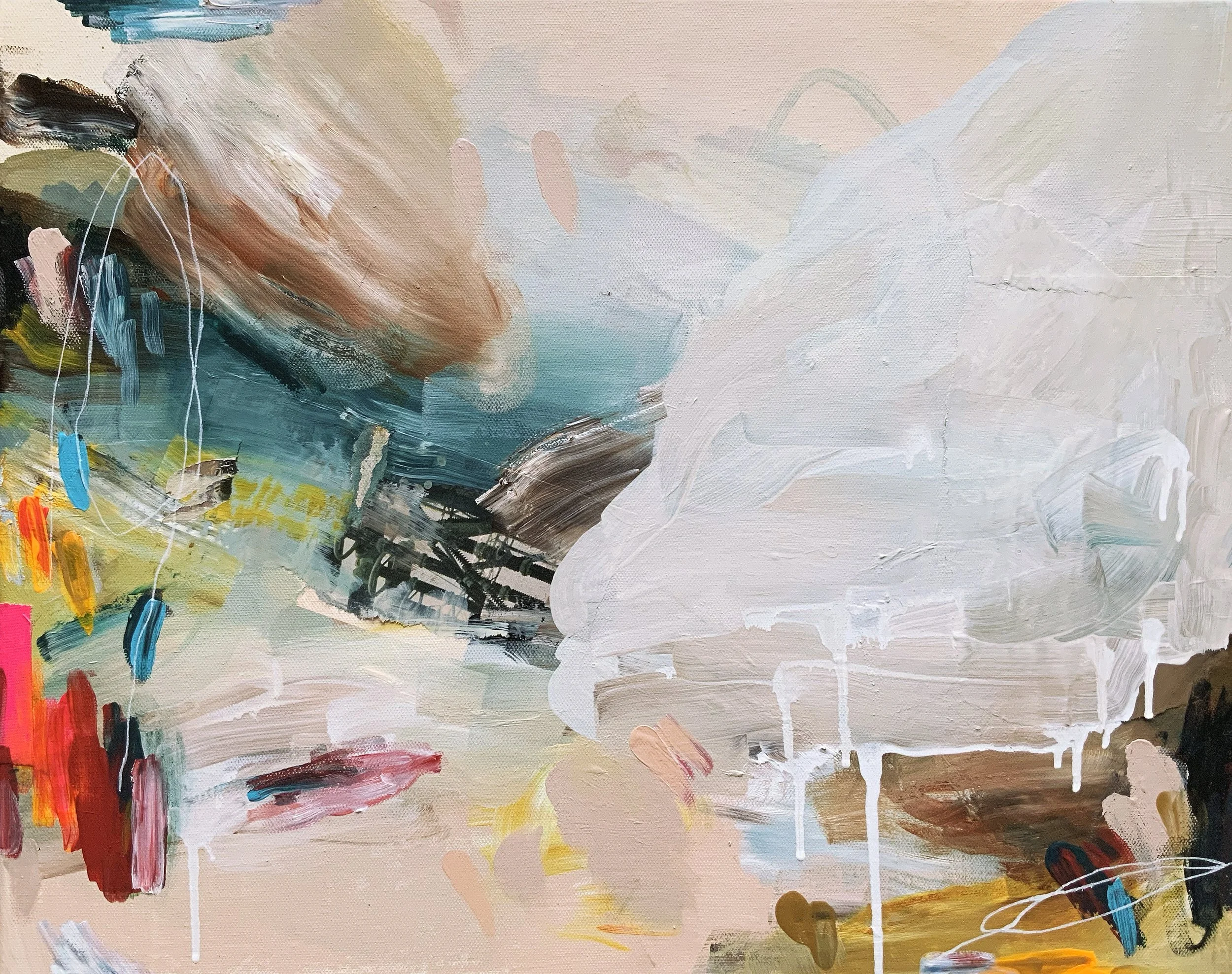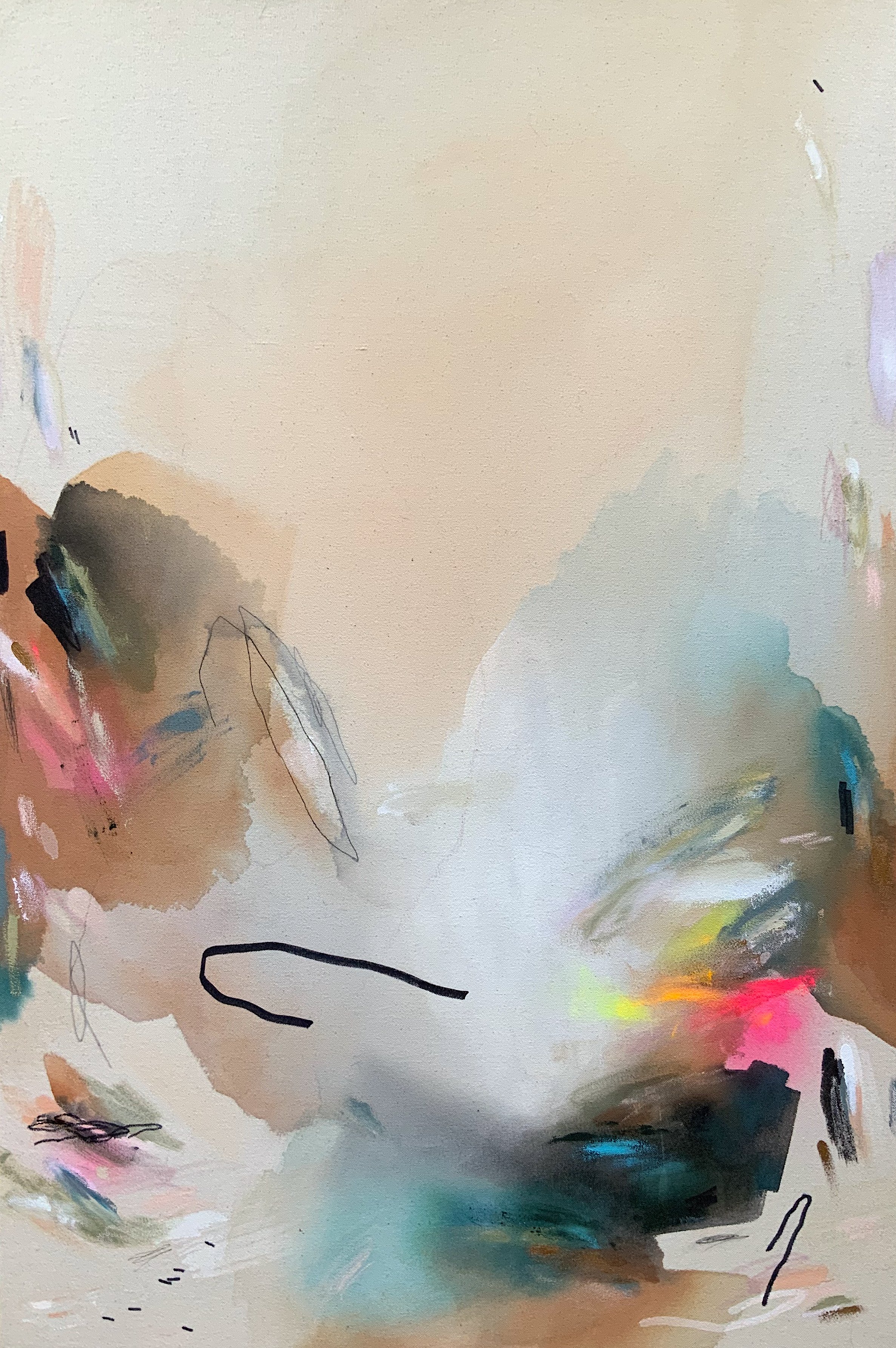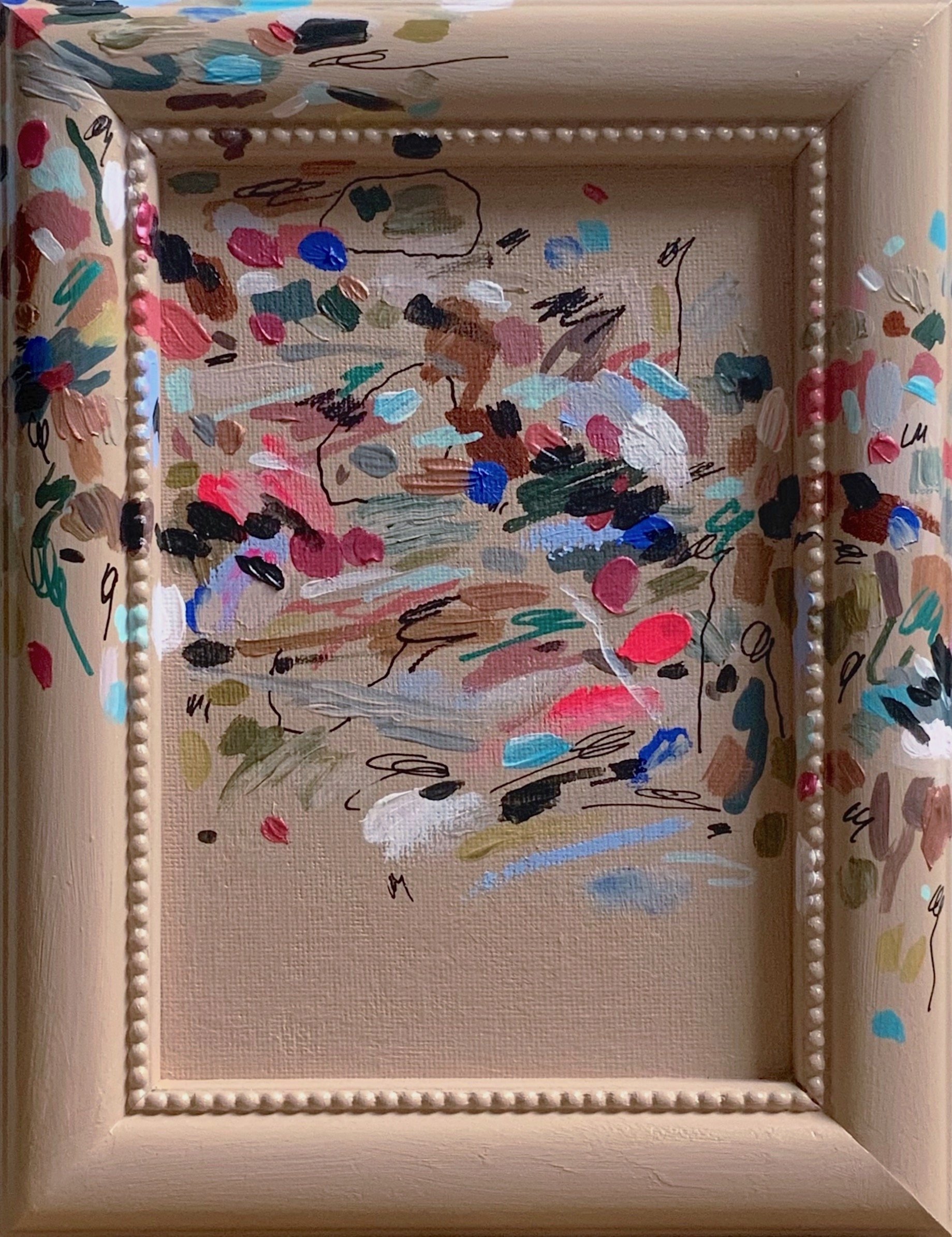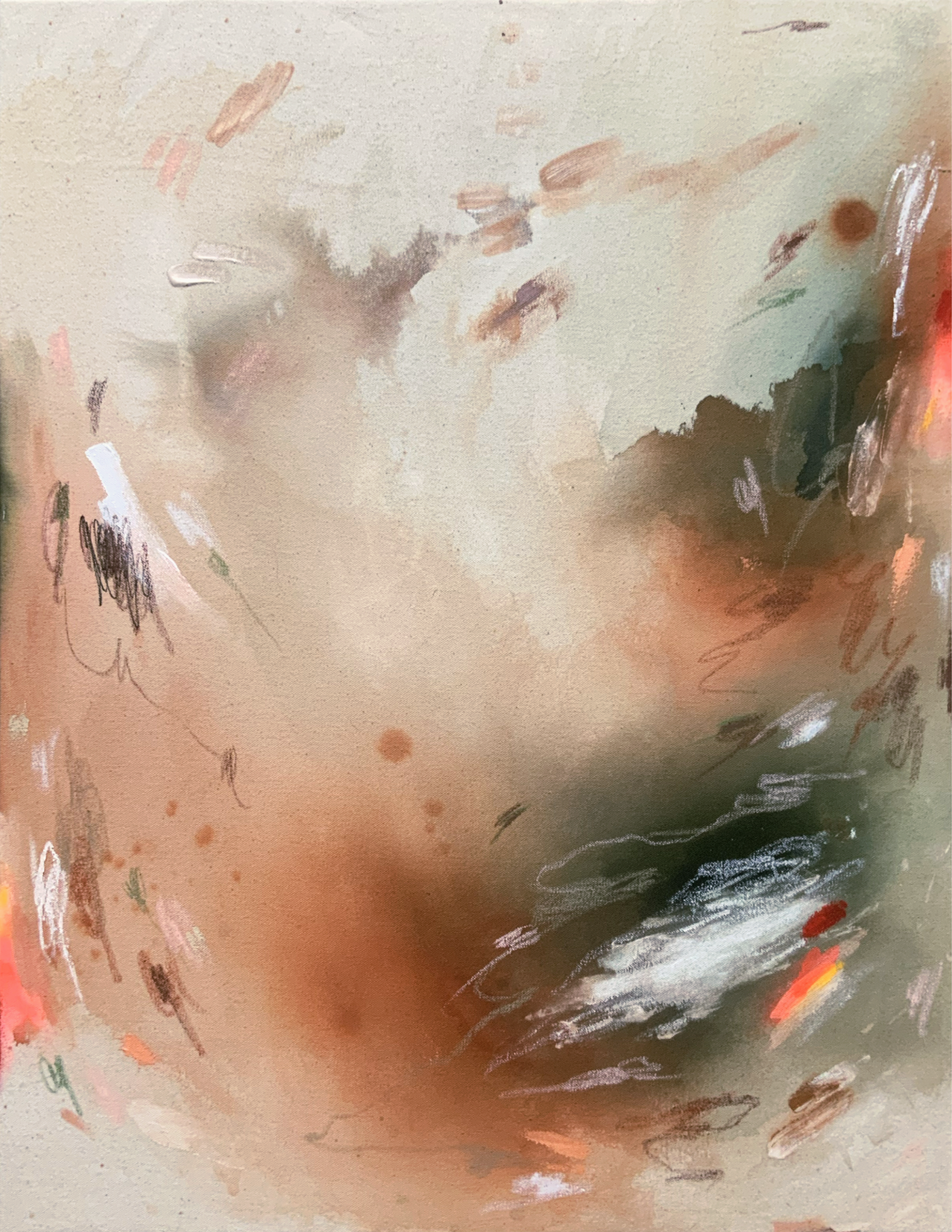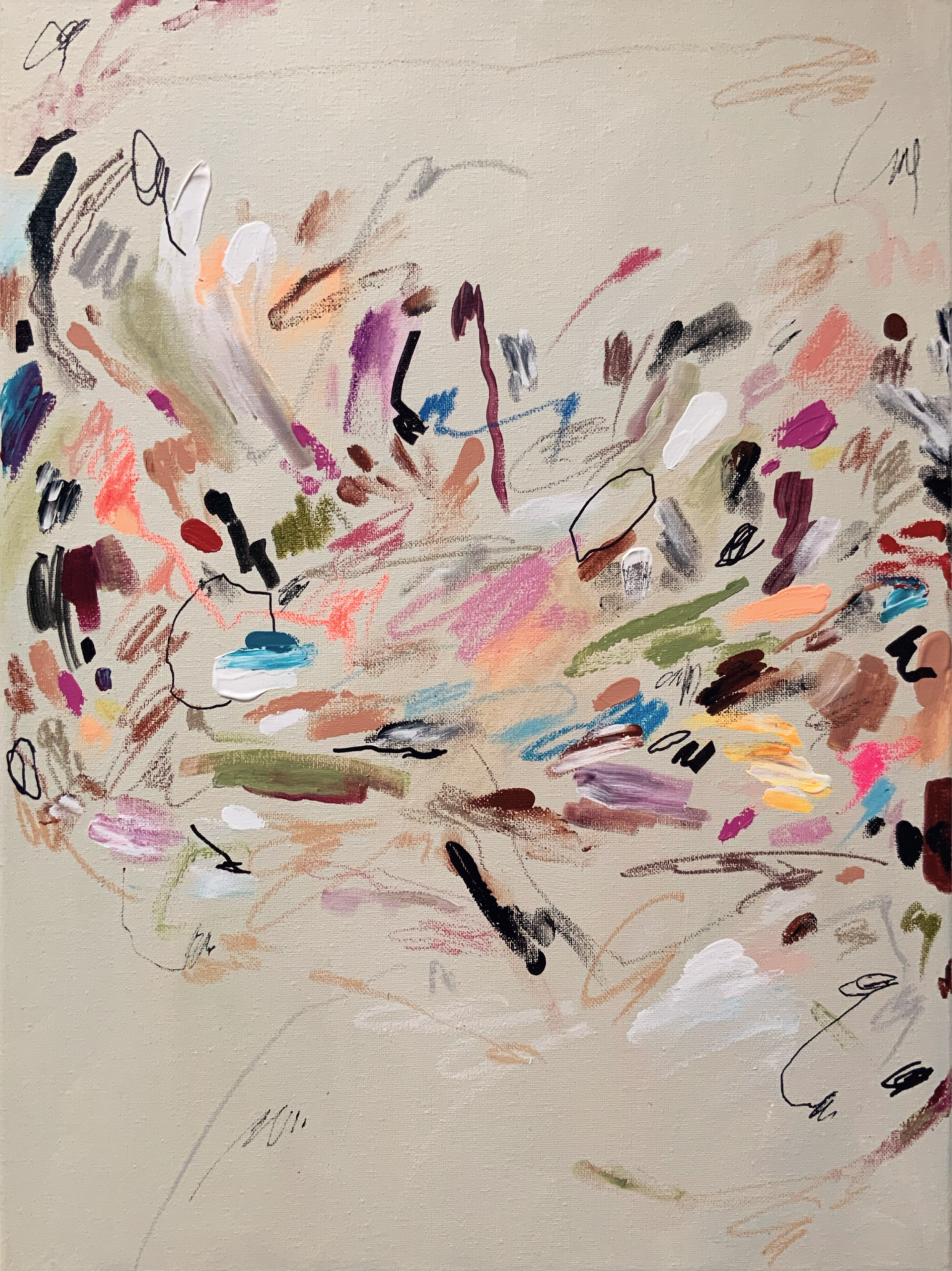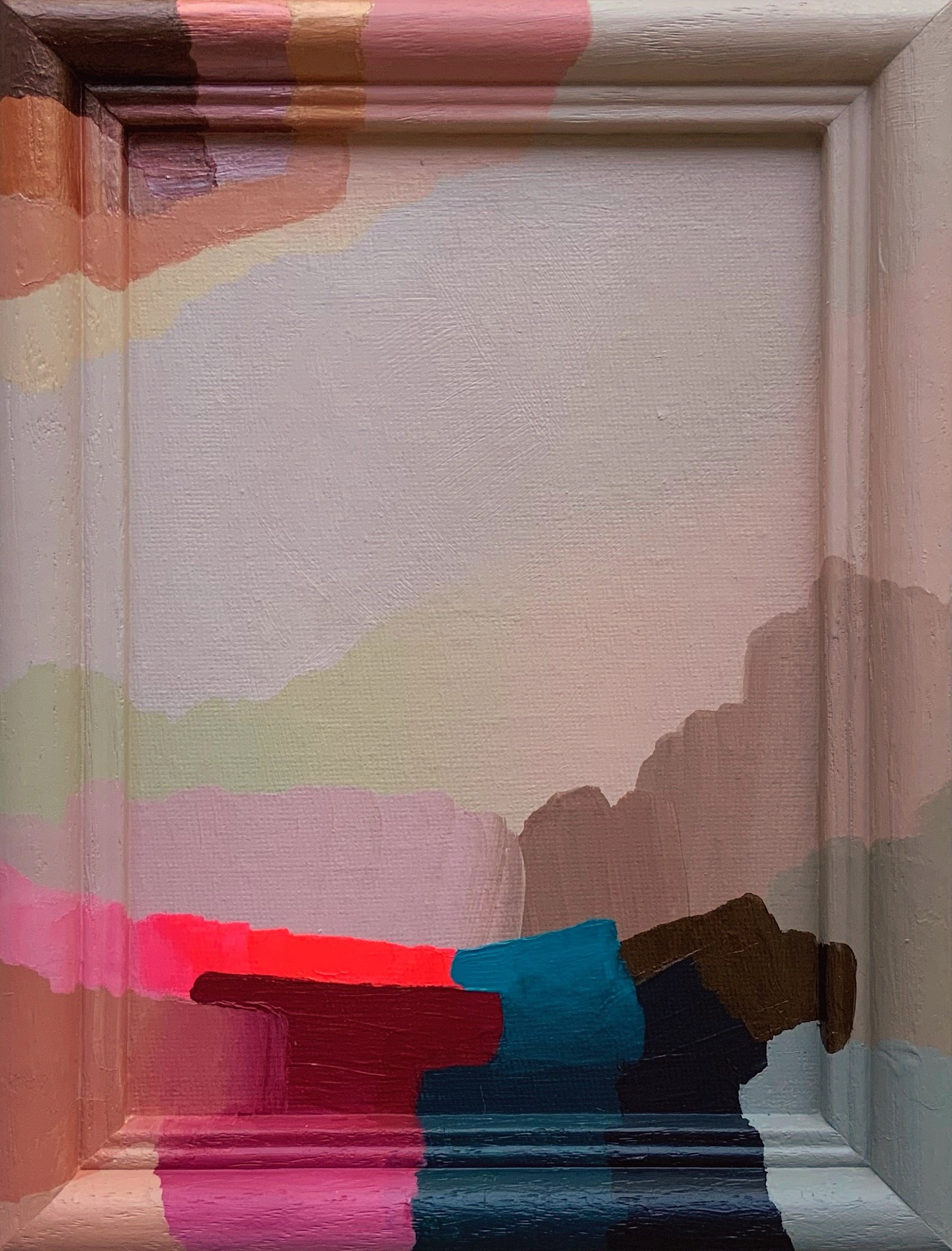Interview
Sarah J. Schwartz
The Covid-19 pandemic provided LA-based abstract painter, Sarah Schwartz the time, focus, and dedicated space to rediscover her creative artistic practice. A product designer with a background in architecture, Schwartz’s work is informed by her training but is by no means restrained by it. Her practice is concerned with duality and dialogue, engaging and pushing the boundaries of various materials and techniques and investigating their capacities for expression. She finds joy in exploring constraints, whether inherent or imposed, and her knowledge of the rules makes her decisions to break them all the more engaging. Schwartz utilizes a wide variety of materials and patterns in her work such as textiles, found objects, tape, and snippets of magazines. She sometimes challenges the bounds of traditional painting by selecting playful, unconventional supports such as skateboards, wooden serving trays, and thrifted frames in lieu of canvas.
Regardless, many of her works are conversations in contrasts: light and dark, textured and smooth, ordered and chaotic, colorful and neutral. Her pieces are informed by the process of art-making itself. They are centered in the pleasures of creating, releasing the artist from concerns about the finished work and allowing the free flow of exchange between her internal and external worlds. Sarah Schwartz holds a Bachelor of Architecture degree from Cornell University. In 2020, she relocated from New York to Los Angeles, where she works as a Senior Product Designer at Apple and pursues her painting practice in her home studio. Recently, her work has been exhibited at The Magic Box at The Mondrian Hotel and she participated in The Other Art Fair in Santa Monica, where she was selected as a Director’s Pick.
What is your background and how did you start your journey in the art world?
“I’ve loved painting and drawing for as long as I can remember. Growing up, I took classes in and out of middle school and high school but then decided to focus on architectural design when attending Cornell University for a more 'practical' choice. After college, I painted every now and then in my 20's while switching to pursue a career in product design. Then, the pandemic hit and that's when my art practice truly flourished. I moved to LA in 2020 and have been painting consistently ever since.”
What does your work aim to say? Does it comment on any current social or political issues?
“My art practice is usually my time to wind down, to reflect, to play, to relish. That's what I want to visually echo in my pieces and that art doesn't 'have to mean' anything. I love to explore my internal world as it relates to everything that's going on around me and sometimes that means resting and playing when things feel too overwhelming, or escaping and distracting when something might be making me feel depressed. I love that my art practice is therapeutic to me and relieves some of the pressure of what it means to be human in this wild world.”
Do you plan your work in advance, or is it improvisation?
“It's a little bit of both! I do enjoy the thrill of jumping right into a piece, unplanned and seeing where the markings and color take me. However, there are times where I have an idea in my head and I sketch it out on my iPad or on a paper study. It's great to have all of these various tools available and leverage them when I need them.”
Are there any art world trends you are following?
“I simply love maximalism. From an interior design standpoint as well as it feeling more 'human' to me. I love the idea of being in a space that feels 'lived in' and I want my art to feel like a cozy blanket sometimes and/or something that can live amongst a gallery wall that acts as a collection of one's memories. There's something that's so lovely to me about that and it's an aesthetic I've been extremely drawn to as of late.”
What process, materials and techniques do you use to create your artwork?
“This is a fun one for me! I love going beyond the bounds of traditional painting materials. I enjoy painting on repurposed and reclaimed items such as old skateboards, vintage frames, and wooden trays instead of canvas. I also love to mix acrylic paint, oil pastel, and even tape, and vintage magazines for some collage elements to my pieces. Found objects have always brought me joy to incorporate in a piece when it simply feels right.”
“My art practice is usually my time to wind down, to reflect, to play, to relish.”
What does your art mean to you?
“I would say all in all, my artwork is about the process of art-making itself. It's centered in the pleasures of creating, releasing me from concerns about the finished work. I think there's a freedom in that, and that's what my art and my art practice means to me. A time and place to be free and explore.”
What’s your favorite artwork and why?
“Growing up, I have always admired Robert Rauschenberg for his use of non-traditional materials and collage techniques. I also love Louise Nevelson's found object artwork and how she unifies her pieces with color. I'm not sure if I have a specific piece of artwork that I would consider my absolute favorite, but I definitely gravitate towards pieces that play with contrast, texture, color, and non-traditional materials.”
Have you had any noteworthy exhibitions you'd like to share?
“I had my first solo show in January of 2023 at the Crescent Tree Gallery in Claremont, CA. I showcased at the Beverly Hills Art Show in 2022. And most recently, I was selected as a Director's Pick at The Other Art Fair held in Santa Monica, CA in September of 2023.”
Website: www.sarahjschwartz.com
Instagram: @sarahjaclynschwartz
Other links: www.threads.net/@sarahjaclynschwartz


